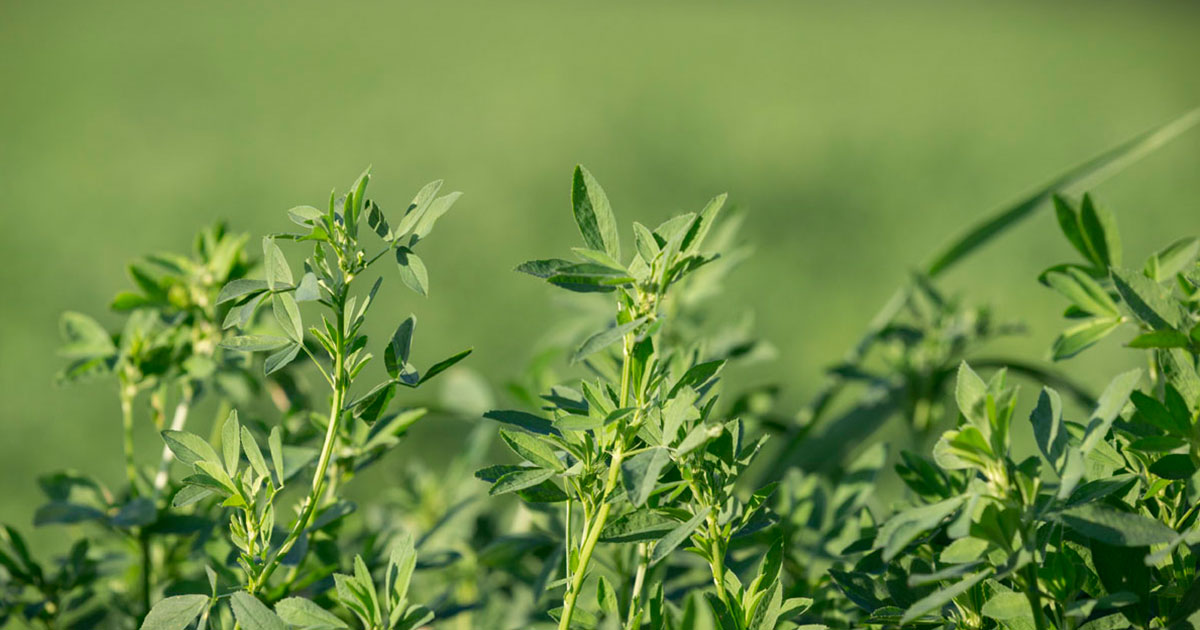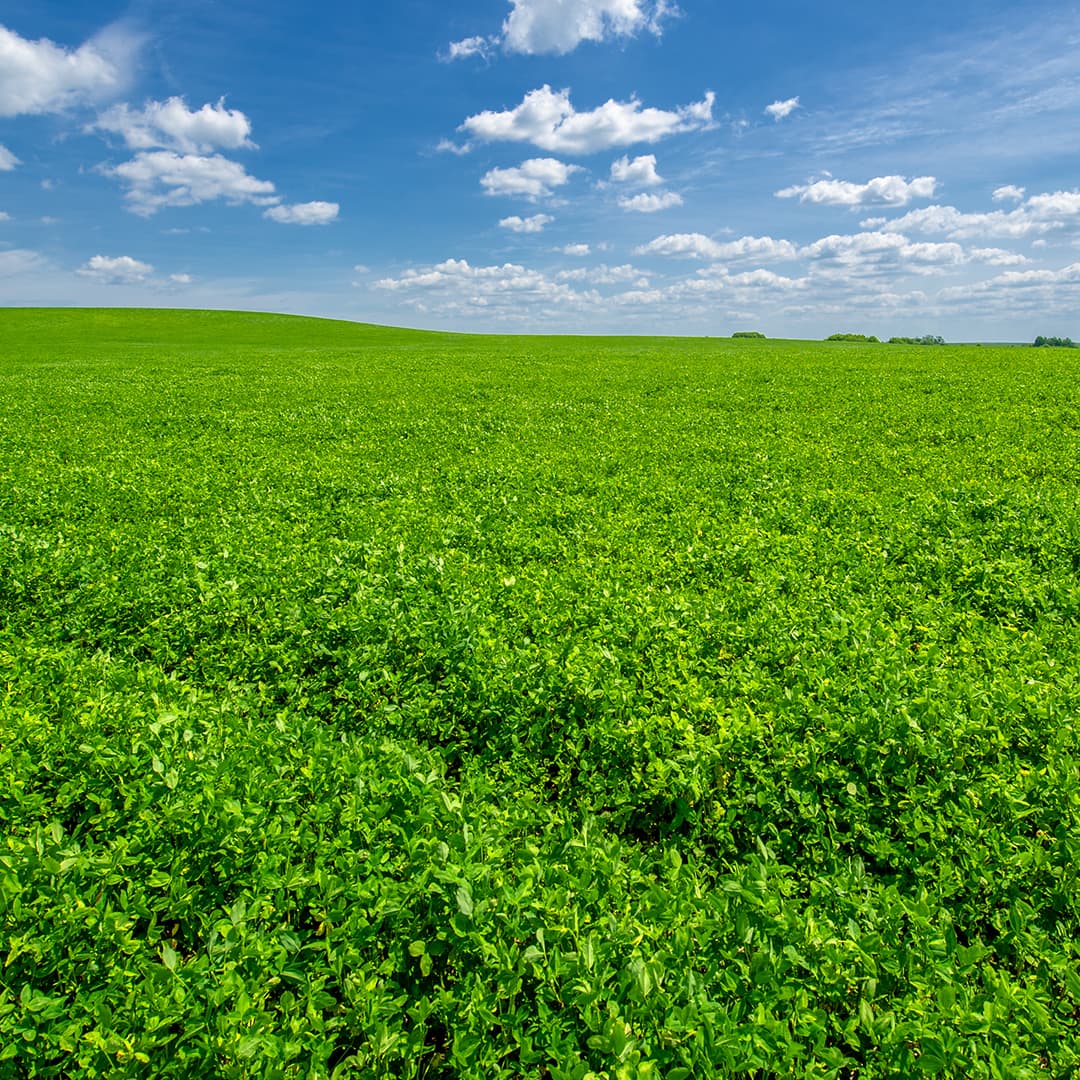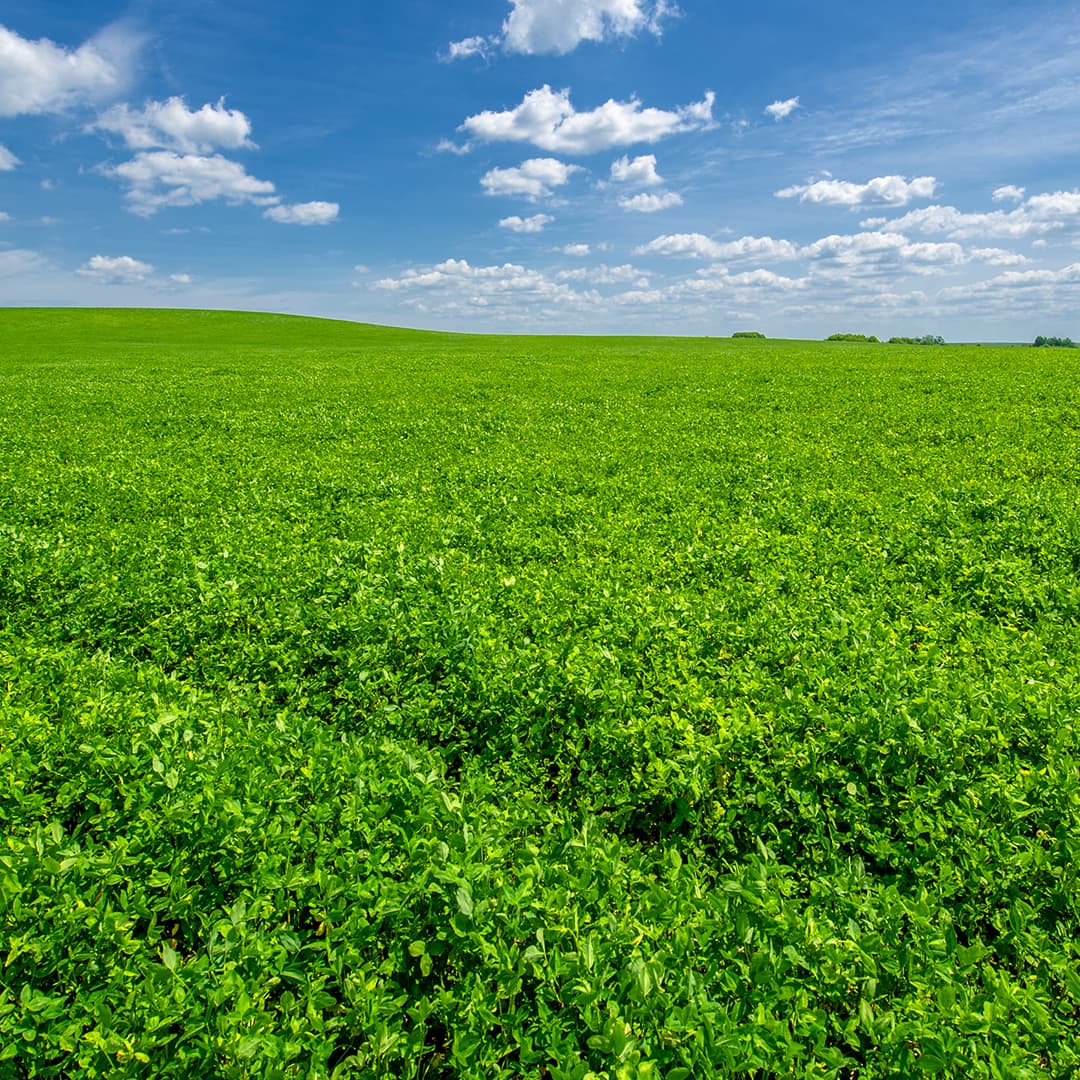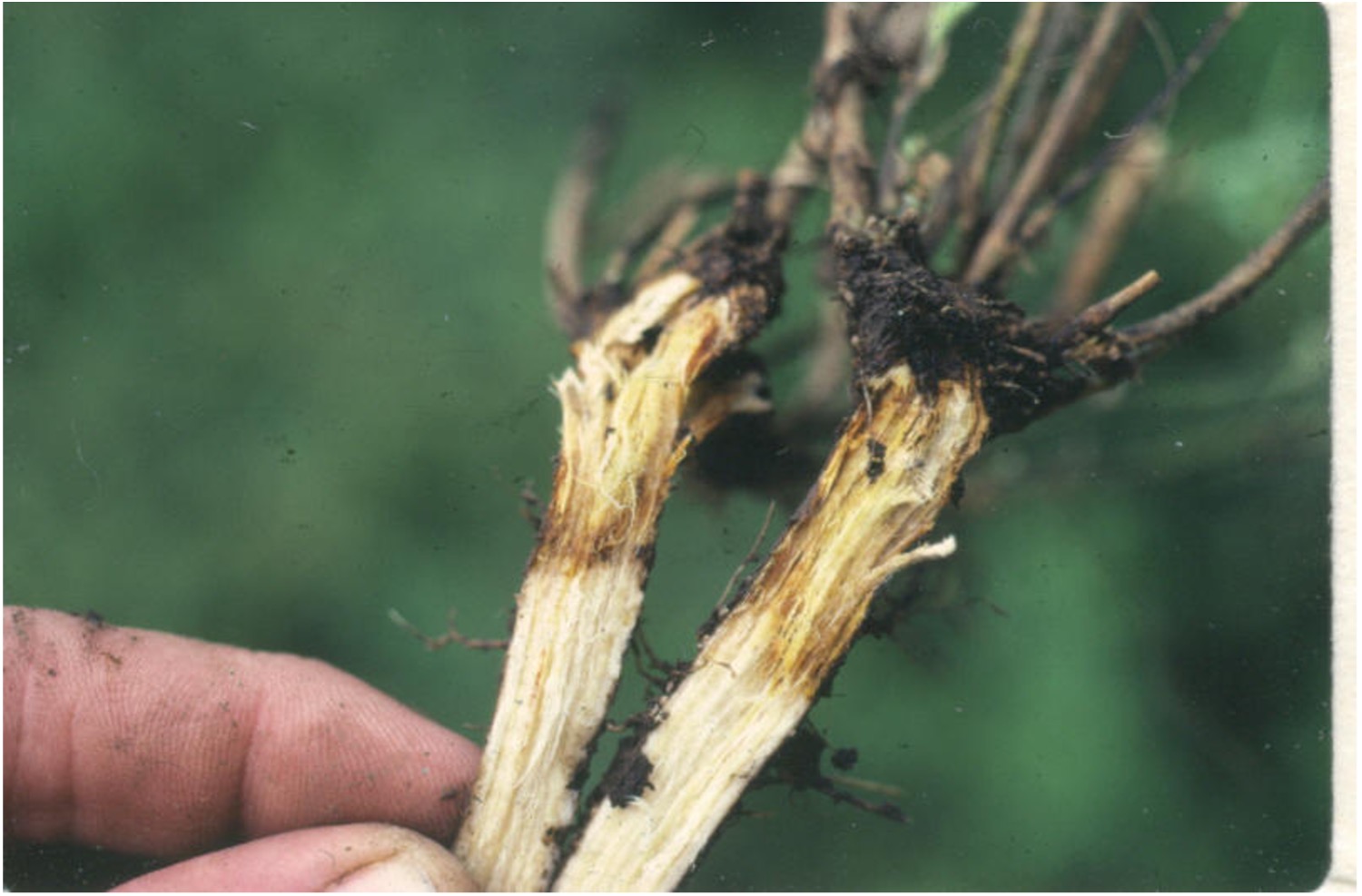For years, the corn and soybean industries have utilized fungicides to help protect plant health, yields and to reduce stress during grain fill. The same can be said of using a fungicide in alfalfa production. Using a fungicide in alfalfa can result in better leaf retention, healthier plants and higher feed quality potential.
Fungicides are labeled in alfalfa for up to three applications during the growing season. While we may have three allowances per growing season, even a single fungicide application in the spring can benefit and protect an alfalfa stand. A spring application of fungicide is generally the best time to treat alfalfa, as spring is when we face the most disease pressure with cool, wet conditions in the field. Fungicides can also tank mix with Roundup® herbicide and insecticides. When you go to do your spring field clean-up to relieve weed and insect pressure, add in a fungicide to help protect your alfalfa crop from disease pressure.
What to Know Before You Spray
First crop? You’re in luck. Studies show on average the first crop or harvest provides a higher percent yield response rate to fungicide application than for later crops.
Consider your climate. Trials show the wetter the climate the better the chance of achieving a profitable response to fungicide application.
Apply fungicide at the right canopy height. It’s ideal to treat first crop alfalfa at 6- to 8-inch canopy height as this will take advantage of its longer regrowth period before harvest.
Know your goals. Applying fungicides will help achieve increased yields but will not necessarily increase forage quality.
For more information regarding fungicide use in alfalfa contact your local alfalfa seed dealer.
12, Brian Lang | Feb. “Does It Pay to Spray Fungicide on Alfalfa?” Farm Progress, 9 Dec. 2018, https://www.farmprogress.com/forage/does-it-pay-spray-fungicide-alfalfa.
Fungicides are labeled in alfalfa for up to three applications during the growing season. While we may have three allowances per growing season, even a single fungicide application in the spring can benefit and protect an alfalfa stand. A spring application of fungicide is generally the best time to treat alfalfa, as spring is when we face the most disease pressure with cool, wet conditions in the field. Fungicides can also tank mix with Roundup® herbicide and insecticides. When you go to do your spring field clean-up to relieve weed and insect pressure, add in a fungicide to help protect your alfalfa crop from disease pressure.
What to Know Before You Spray
First crop? You’re in luck. Studies show on average the first crop or harvest provides a higher percent yield response rate to fungicide application than for later crops.
Consider your climate. Trials show the wetter the climate the better the chance of achieving a profitable response to fungicide application.
Apply fungicide at the right canopy height. It’s ideal to treat first crop alfalfa at 6- to 8-inch canopy height as this will take advantage of its longer regrowth period before harvest.
Know your goals. Applying fungicides will help achieve increased yields but will not necessarily increase forage quality.
For more information regarding fungicide use in alfalfa contact your local alfalfa seed dealer.
12, Brian Lang | Feb. “Does It Pay to Spray Fungicide on Alfalfa?” Farm Progress, 9 Dec. 2018, https://www.farmprogress.com/forage/does-it-pay-spray-fungicide-alfalfa.



